I’ve long had a Cornelian cherry (Cornus mas) in the garden without a partner. The oldest is maybe 20 years old. I’ve several times tried to propagate more plants but they always died. I finally got a second plant going thanks to a gardening friend Alvilde who didn’t want hers anymore, but still no fruit, maybe it was a clone of the first one? This spring I took a few sprigs of flowering twigs from a couple of plants at the botanical garden at Ringve and put them next to my two plants. It did the trick as my two bushes were full of fruit this year, but only a few fruit on one of the bushes turned red and probably weren’t fully ripe. Perhaps we’ll make Polish Olives with them? It would be nice with a home grown olive surrogate? See Szczepaniak et al. (2019).
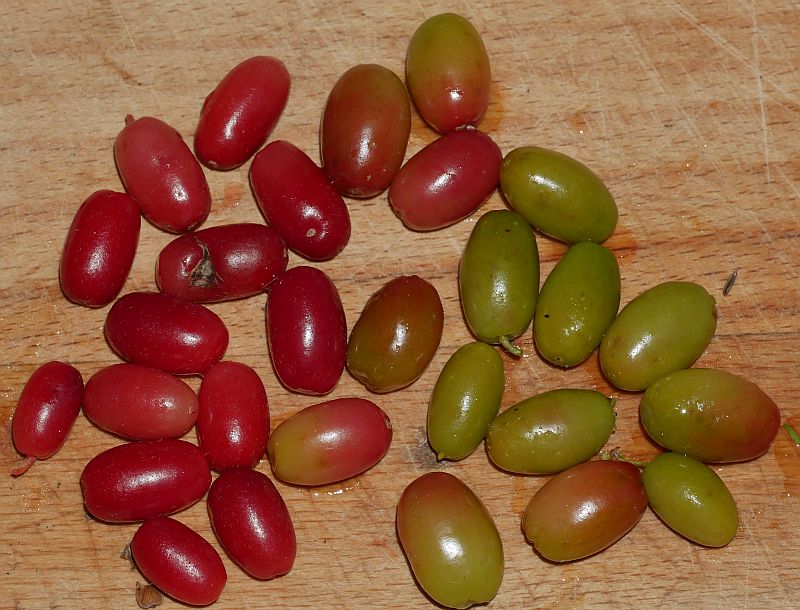
The bushes at Ringve, which were in a warmer and much sunnier spot than in my garden, were, on the other hand, laden with ripe fruit!
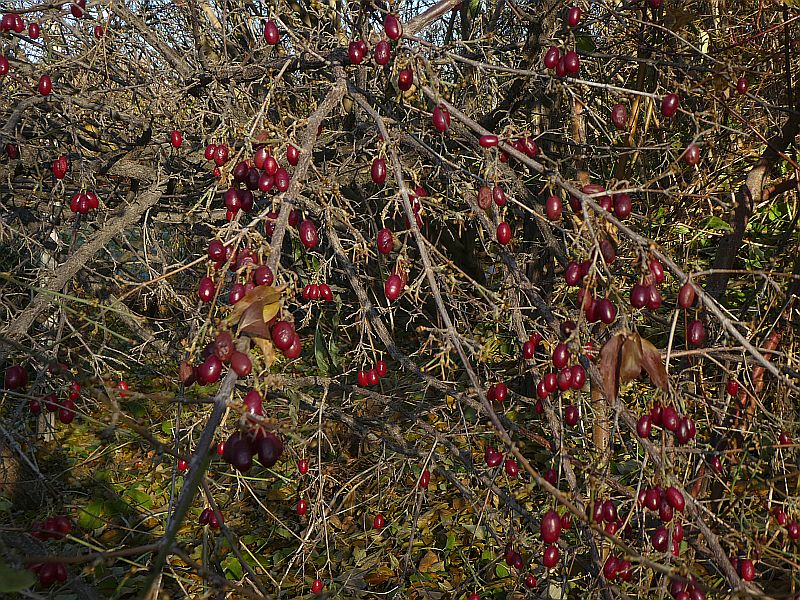

Although sour tasting raw, I was intrigued to see what they would taste like dried. My favourite dried fruit are sour cherries. Although not as good as those, I enjoyed the taste and they will this winter be part of my late winter dried fruit mixes that I eat every morning for breakfast once the fresh apples are finished.
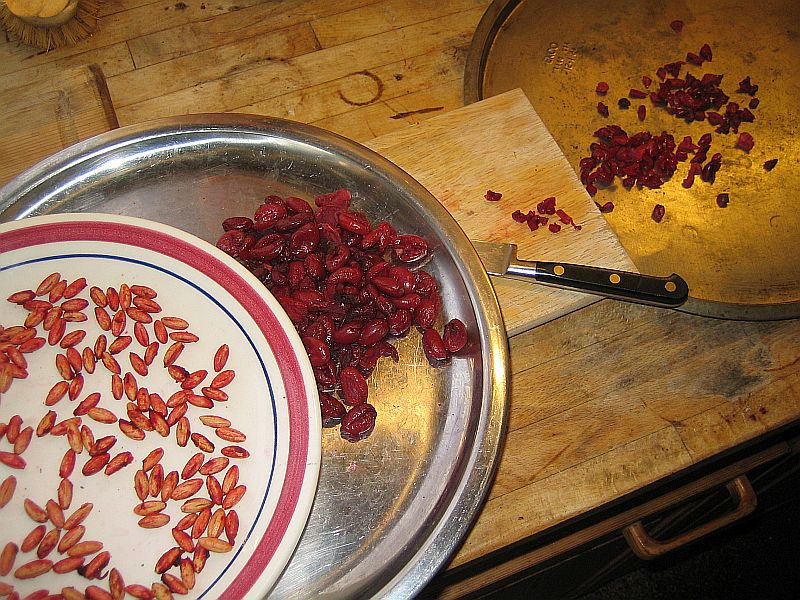
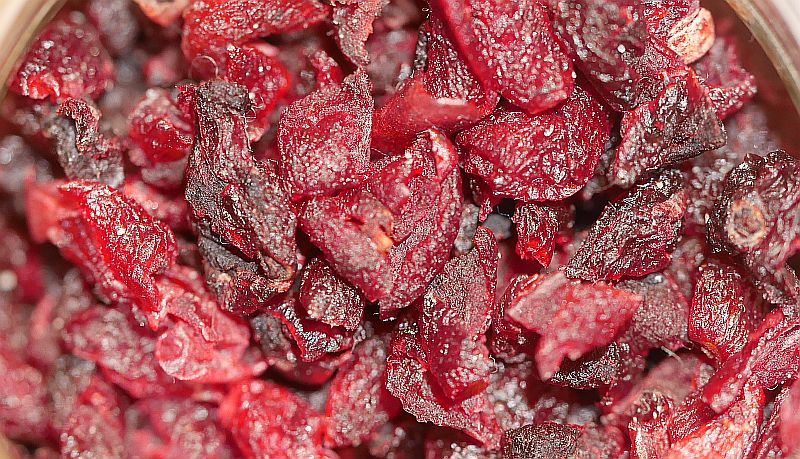
There are many varieties of cornelian cherry bred for bigger fruits, there are also pear shaped fruit varieties and yellow cultivars. (Edit: My friend Jesper Bay tells me that there’s also a black fruited variety!) There are also a number of ornamental varieties, such as the wonderful variegated form I once saw laden with fruit in the Oxford Botanical Garden (see the pictures below).
´Elegantnyj´, ´Jalt´, ´Kijevskij´, ´Lukjanovskij´, ´Vydubeckij´ are Russian in origin; ´Devin´, ´Olomoucky, ´Ruzynsky´, ´Sokolnicky´, ´Titus´ are from Czechoslovakia and Slovakia; ´Joliko´ and ´Fruchtal´ are Austrian and ‘Ntoulia 1’ and ‘Ntoulia 2’ are Greek.<
There are also partially self-fertile varieties.
Cornus mas has been cultivated commercially for centuries in the Caucasus and Central Asia. Turkey has today an important Cornelian cherry industry.
‘Kasanlaker’ is a large fruited cultivar which is available from nurseries in Western Europe.
I remember on a visit to Scandinavia’s oldest forest garden at Holma in Southern Sweden being shown a large Cornus mas in the centre of the city Lund on 1st September 2017! Here’s a picture of various forest gardeners harvesting the fruit (the tree was full):
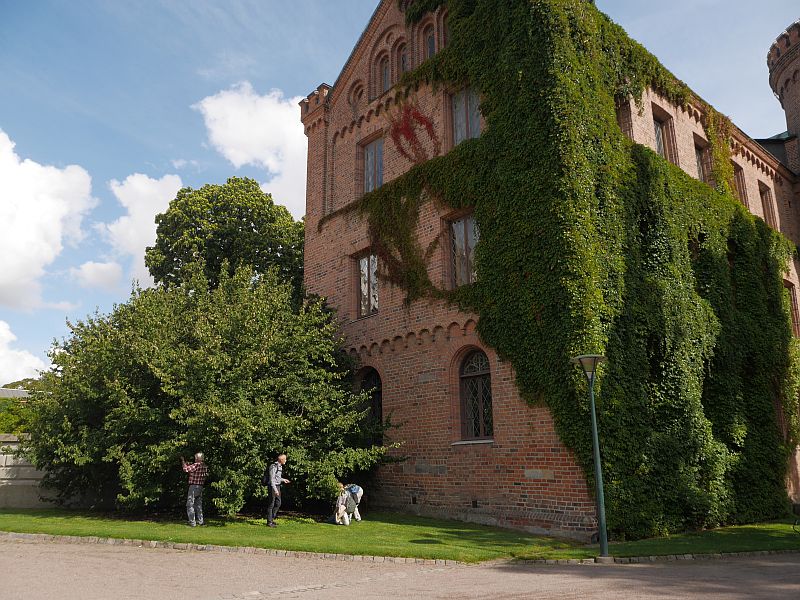
Reference
Oskar M. Szczepaniak, Kobus‑Cisowska, J., Kusek, W. and Przeo, M. 2019. Functional properties of Cornelian cherry (Cornus mas L.): a comprehensive review. European Food Research and Technology. 245:2071–2087

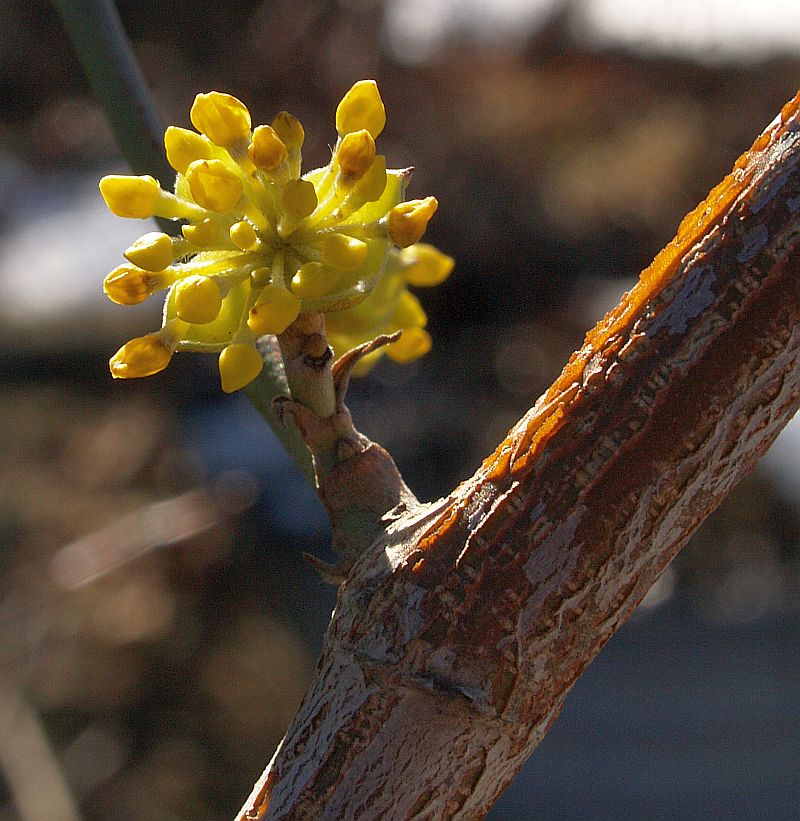

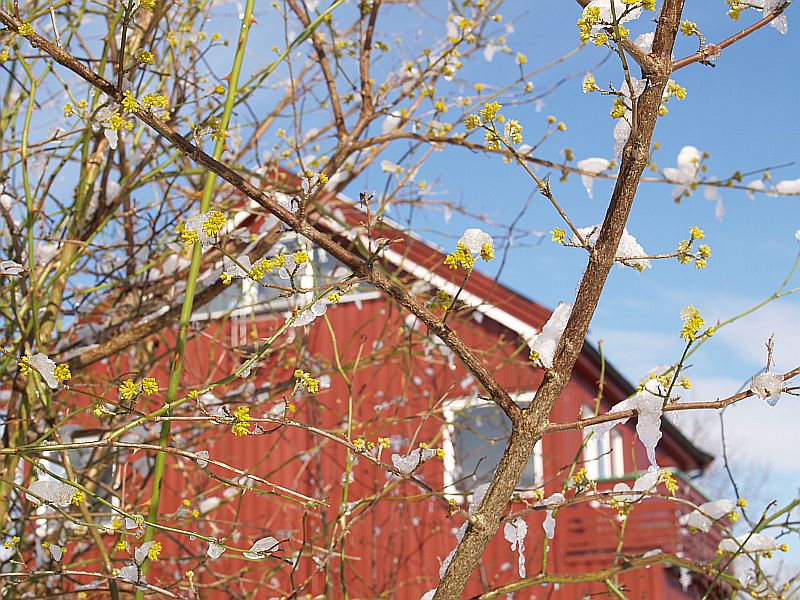



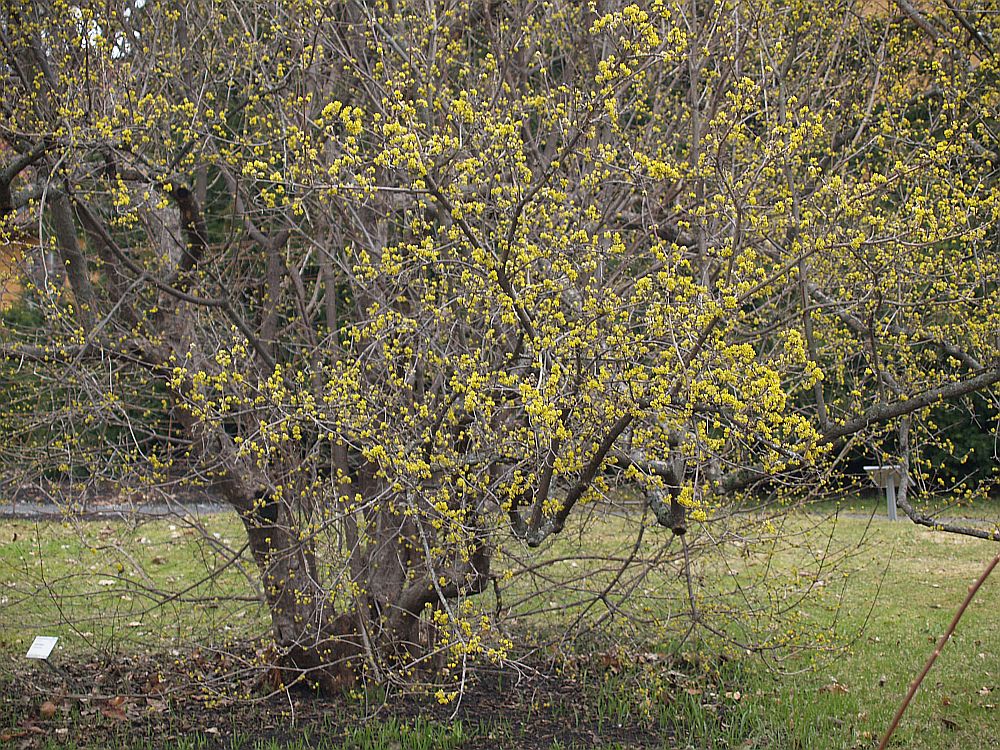

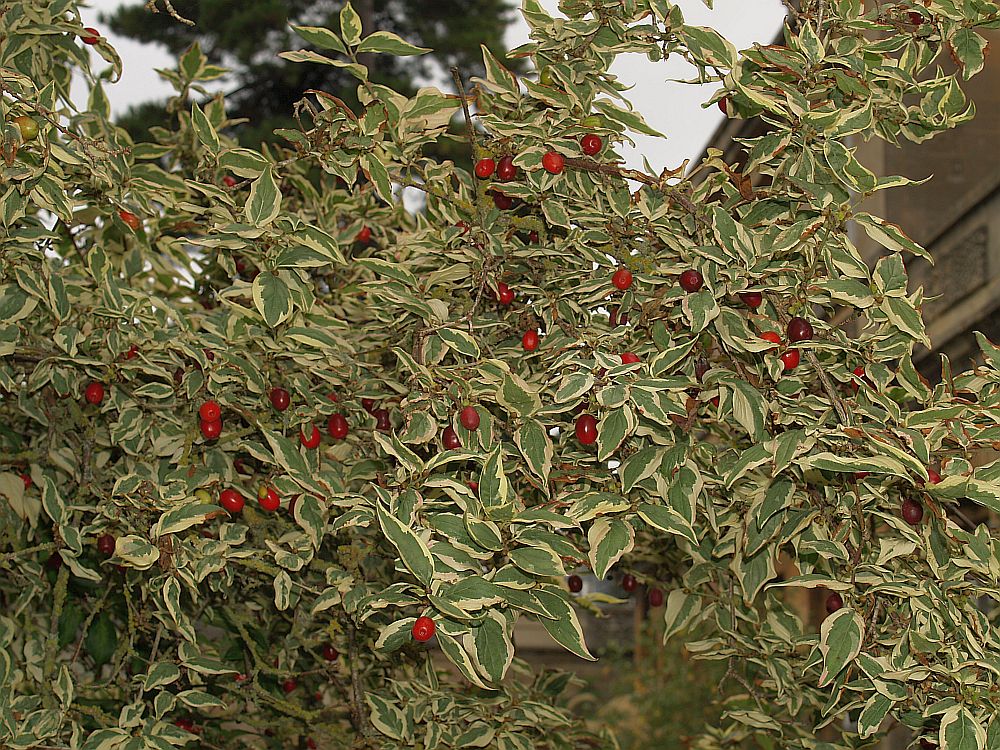
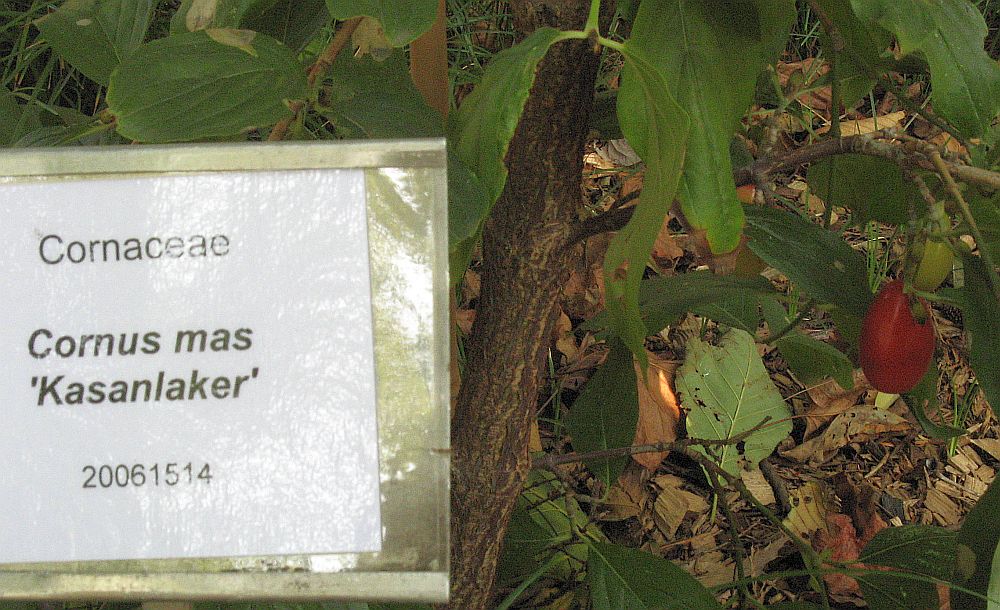
Hello Stephen Barstow,
What is the cultivar name of the black Cornus mas Jesper Bay told you about? Any info related to this black Cornus mas would be appreciated.
Thanks,
Eric